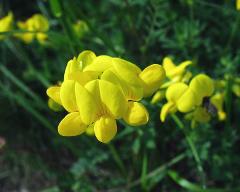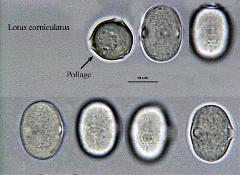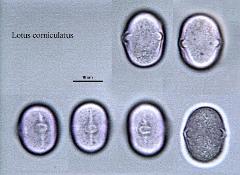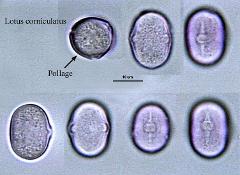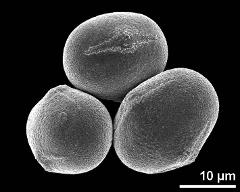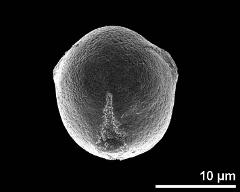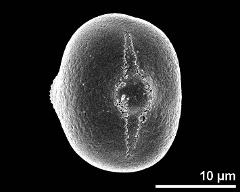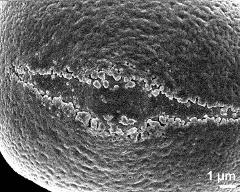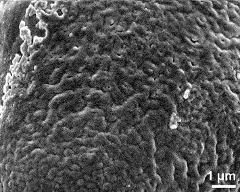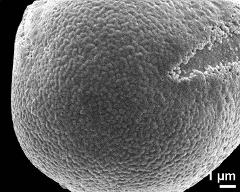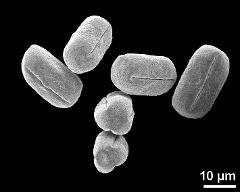Lotus corniculatus
Taxonomy: Angiospermae, Fabales, Fabaceae, Lotus
Links: http://flora.nhm-wien.ac.at/Seiten-Arten/Lotus-corniculatus-cor.htm
Published: 2021-06-08
Pollen Description
Shape, Size and Aperture
pollen unit: monad, dispersal unit and peculiarities: monad, size (pollen unit): small (10-25 µm), size of hydrated pollen (LM): 16-20 µm, shortest polar axis in equatorial view (LM): -, longest polar axis in equatorial view (LM): 16-20 µm, shortest diameter in equatorial or polar view (LM): 11-15 µm, longest diameter in equatorial or polar view (LM): 11-15 µm, pollen class: colporate, polarity: isopolar, P/E-ratio: -, shape: spheroidal, outline in polar view: circular, dominant orientation (LM): equatorial, P/E-ratio (dry pollen): prolate, shape (dry pollen): -, outline in polar view (dry pollen): triangular, infoldings (dry pollen): aperture(s) sunken, aperture number: 3, aperture type: colporus, aperture condition: colporate, tricolporate, aperture peculiarities: margo
Ornamentation and Structure
LM ornamentation LM: psilate, nexine: -, sexine: -, SEM ornamentation SEM: psilate, perforate, suprasculpture SEM: -, TEM tectum: -, infratectum: -, foot layer: -, endexine: -, intine: -, wall peculiarities: -, supratectal element: -
Miscellaneous
pollen coatings: -, reserves in cytoplasm: -, cell number: -, Ubisch bodies: absent
Author(s) of diagnosis: Halbritter, Heidemarie; Heigl, Helmut; Auer, Waltraud
Pictures
Picture legend
- flower(s), photographer: Halbritter, H.
- hydrated pollen - fresh, glycerine, unstained, photographer: Heigl, H.
- hydrated pollen - fresh, glycerine, ruthenium red, photographer: Heigl, H.
- hydrated pollen - fresh, glycerine, ruthenium red, photographer: Heigl, H.
- hydrated pollen grains - fresh, rehydrated (water) & critical point dried & sputter coated with gold, photographer: Halbritter, H.
- polar view - fresh, rehydrated (water) & critical point dried & sputter coated with gold, photographer: Halbritter, H.
- equatorial view - fresh, rehydrated (water) & critical point dried & sputter coated with gold, photographer: Halbritter, H.
- aperture - fresh, rehydrated (water) & critical point dried & sputter coated with gold, photographer: Halbritter, H.
- exine surface - fresh, rehydrated (water) & critical point dried & sputter coated with gold, photographer: Halbritter, H.
- polar area - fresh, rehydrated (water) & critical point dried & sputter coated with gold, photographer: Halbritter, H.
- dry pollen grains - dry, sputter coated with gold, photographer: Halbritter, H.
Literature
- (1998) Preparing living pollen material for scanning electron microscopy using 2,2-dimethoxypropane (DMP) and criticalpoint drying. Biotechnic Histochem 73: 137–143
Copyright and Citation
Cite this publication as:
Halbritter H., Heigl H., Auer W. 2021. Lotus corniculatus. In: PalDat - A palynological database. https://www.paldat.org/pub/Lotus_corniculatus/306119;jsessionid=C169FD051AD081678C7639CCE3497A3D; accessed 2024-04-23

